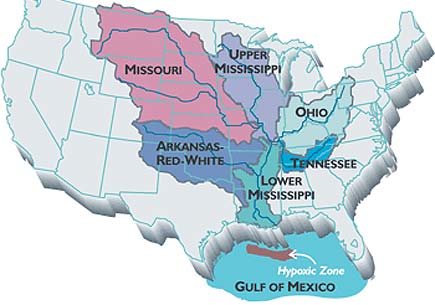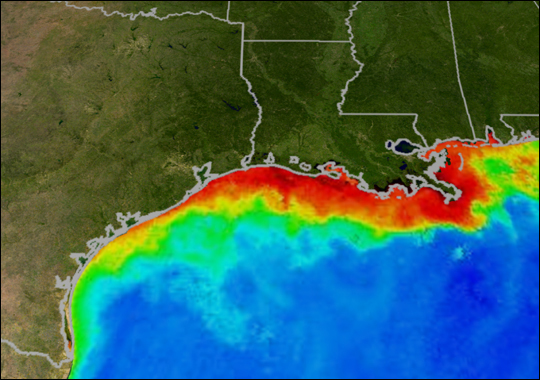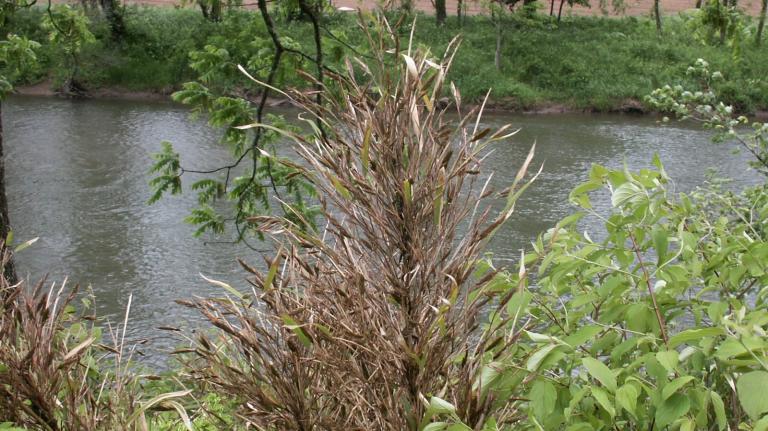
NOAAThe possible dead zone is shown in red.
Get ready for a swath of marine sterility the likes of which Gulf fishermen have never seen.
NOAA warned Tuesday that a dead zone the size of New Jersey could break records this summer in the Gulf of Mexico. Heavy rainfalls are washing a stew of pollutants and nutrients into the Gulf, feeding outbreaks of algae that will rob the waters of oxygen as they die and decompose. In these oxygen-deprived waters, marine life either flee or die.
The Gulf dead zone is caused every summer by fertilizer and animal waste running off from farms, including those along the Mississippi River and its tributaries. Sewage and other sources of nutrient-loaded pollution, such as lawn fertilizers, also play a role. From a NOAA press release:
NOAA-supported modelers … are forecasting that this year’s Gulf of Mexico hypoxic “dead” zone will be between 7,286 and 8,561 square miles which could place it among the ten largest recorded. That would range from an area the size of Connecticut, Rhode Island and the District of Columbia combined on the low end to the New Jersey on the upper end. The high estimate would exceed the largest ever reported 8,481 square miles in 2002.
The agency said that the size of the dead zone (which includes marine areas afflicted by zero oxygen and low oxygen) could be reduced by a large storm or hurricane, which would help churn up the water. But even that would not be nearly enough to keep it within the 1,950-square-mile goal set by the Mississippi River/Gulf of Mexico Watershed Nutrient Task Force, a coalition of federal, state and tribal agencies. The aim is to reach that goal by 2015. From the University of Michigan:
“The size of the Gulf dead zone goes up and down depending on that particular year’s weather patterns. But the bottom line is that we will never reach the action plan’s goal of 1,950 square miles until more serious actions are taken to reduce the loss of Midwest fertilizers to the Mississippi River system, regardless of the weather,” said U-M aquatic ecologist Donald Scavia.

Donald Scavia / University of MichiganFarmland runoff containing fertilizers and livestock waste, some of it from as far away as the Corn Belt, is the main source of the nitrogen and phosphorus that cause the annual Gulf of Mexico “dead zone.”
The news Tuesday was not all doom and gloom, however. The researchers foresee a smaller than average dead zone this summer in Chesapeake Bay. That’s because fewer nutrients are flowing into the estuary than in years past. Again from NOAA:
For the Chesapeake Bay, USGS estimates 36,600 metric tons of nutrients entered the estuary from the Susquehanna and Potomac rivers between January and May, which is 30 percent below the average loads estimated from 1990 to 2013.




